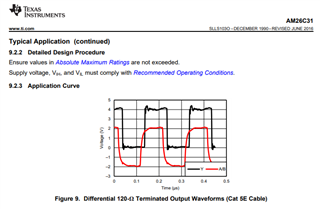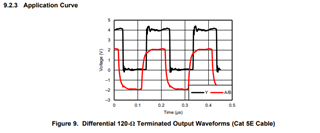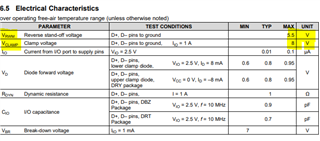Other Parts Discussed in Thread: TPD2E007, AM26C31, AM26C32, STRIKE, THVD1552
Hi Team,
My customer is considering use TPD2E009 to connect differential output of AM26C31INSR. He has following 2 questions, could you kindly help? Thanks.
1. Can TPD2E009 be used for RS-485 application? Communication speed is several hundred kHz.
BTW, I saw ESD protection IC selection guidance recommended TPD2E007 for RS-485 application, and I saw the difference between TPD2E009 and TPD2E007 is uni-directional and bi-directional.
Does it mean bi-directional is necessary for RS-485 application?
2. Is it okay to connect AM26C31INSR's output with TPD2E009DBZR's D+ and D-?
From AM26C31INSR's datasheet, VDO is 3.1V.
And from TPD2E009's datasheet, operating voltage is range from 0V to 5.5V.
So I think 3.1V VDO is inside the range, TPD2E009 can be used here. Am I understanding it correct? Or VDO needs to double so should be 6.2V?


Thanks.
Regards,
Jo








